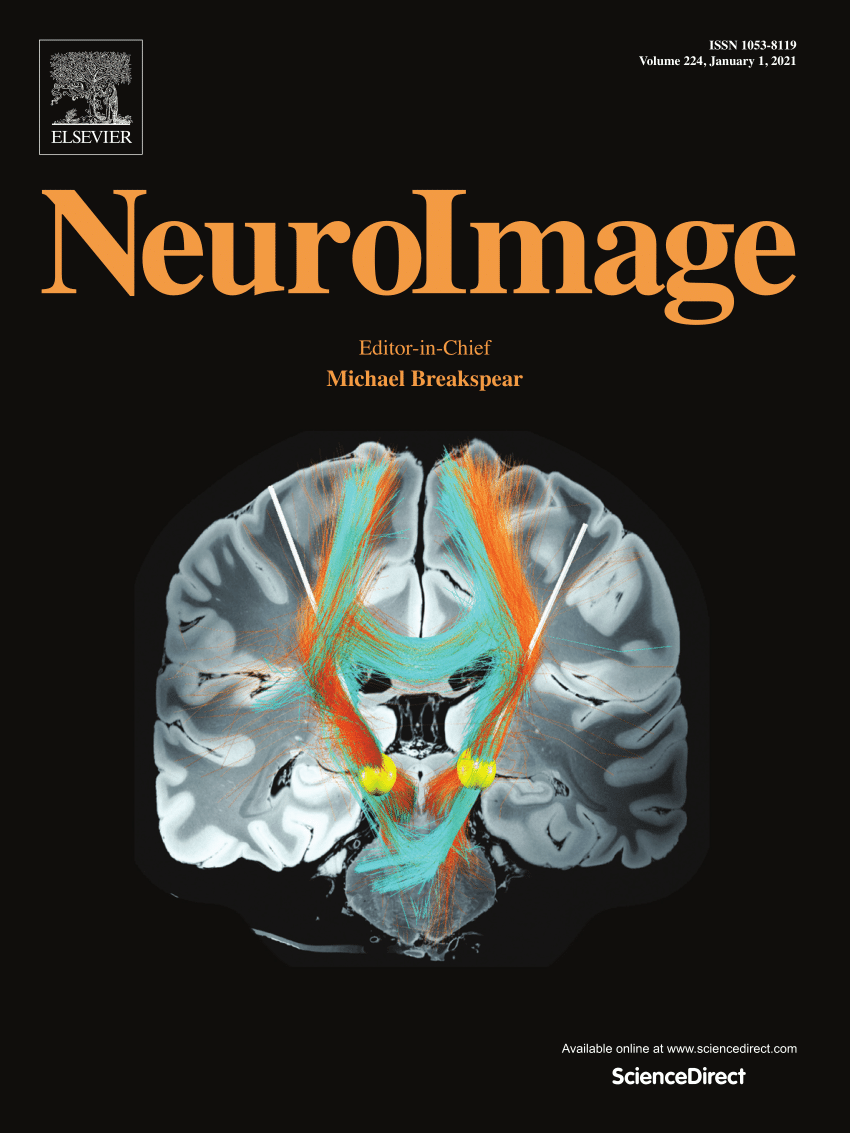PET imaging of functional 5-HT1A receptors with [18F]F13640: From PET kinetics modeling to static Standardized Uptake Values Ratio
IF 4.7
2区 医学
Q1 NEUROIMAGING
引用次数: 0
Abstract
Purpose
F13640 is a highly selective serotonin 5-HT1A receptor ligand with agonist properties identified as a PET radiopharmaceutical candidate. In previous work, we showed the possibility to use long dynamic PET acquisition (225 min) combined with simplified kinetic modelling for [18F]F13640 quantification. In this work, we assessed the feasibility of static acquisition and quantification using standardized uptake value ratio (SUVR) as an alternative.
Methods
Test-retest PET-MRI scans of 225 min were conducted in eight healthy male volunteers. For 17 brain regions, distribution volume ratios (DVR) were calculated from the whole kinetics using Logan plot modelling method with the cerebellum white matter as reference region. For the same regions, SUVR were also calculated from static images, for four 20-minute and four 10-minute time-intervals at various time of uptake. Reliability between SUVR and DVR measures were studied, and test-retest parameters were assessed between PET sessions for each time-interval.
Results
Reproducibility of measures of SUVR compared to DVR were excellent, whatever the time interval (p < 0.001). For the 20-min. time-intervals, SUVR150–170 showed the best reproducibility and correlation parameters (R2 = 0.95 ± 0.03, intercept = 0.06 ± 0.02, slope = 0.95 ± 0.01). As well, for the 10-min. time-intervals, SUVR150–160 showed the best correlation (R2 = 0.94 ± 0.03, intercept = 0.07 ± 0.02, slope = 0.94 ± 0.01). SUVR reproducibility between test-retest sessions was also excellent for each time-interval. These results were valid for pooled regions as well as at regional level.
Conclusion
This study confirms the feasibility of static acquisitions to facilitate clinical use of the [18F]F13640 radiopharmaceutical to image functional 5-HT1A receptors. This involves off-camera injection, 10 to 20 mins static acquisition duration, and quantification using SUVR, while improving patient comfort.
用[18F]F13640 对功能性 5-HT1A 受体进行 PET 成像:从 PET 动力学建模到静态标准化摄取值比率
本文章由计算机程序翻译,如有差异,请以英文原文为准。
求助全文
约1分钟内获得全文
求助全文
来源期刊

NeuroImage
医学-核医学
CiteScore
11.30
自引率
10.50%
发文量
809
审稿时长
63 days
期刊介绍:
NeuroImage, a Journal of Brain Function provides a vehicle for communicating important advances in acquiring, analyzing, and modelling neuroimaging data and in applying these techniques to the study of structure-function and brain-behavior relationships. Though the emphasis is on the macroscopic level of human brain organization, meso-and microscopic neuroimaging across all species will be considered if informative for understanding the aforementioned relationships.
 求助内容:
求助内容: 应助结果提醒方式:
应助结果提醒方式:


